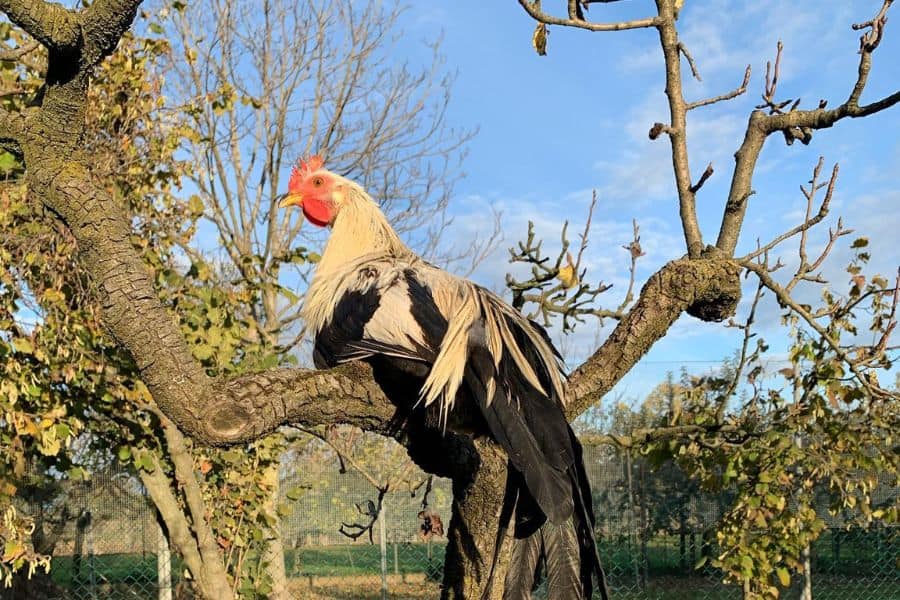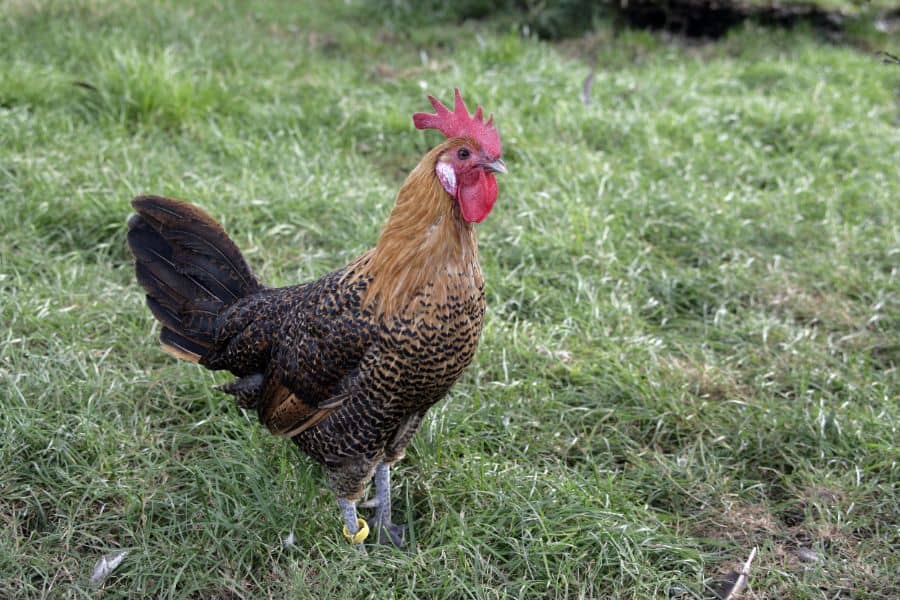There may be 34.4 billion chickens on earth today but only a fraction of these are heritage breeds. In fact, some heritage chicken breeds are so rare their numbers are in the hundreds.
The numbers of many chicken breeds suffered a steep decline following the rise of hybrid broilers and layers and the industrialization of chicken farming. Other breeds became rare because they were never bred outside specific regions or due to their fragility.
These rare chicken breeds are today in the hands of just a few farmers and breeders, and you may be lucky to even see one. Many of these rare chickens are also among the most stunning and peculiar chickens you’ll come across.
We compiled a list of twelve such breeds that many poultry enthusiasts can only hope to one day have in their flocks.
12 Rarest Chicken Breeds
Holland
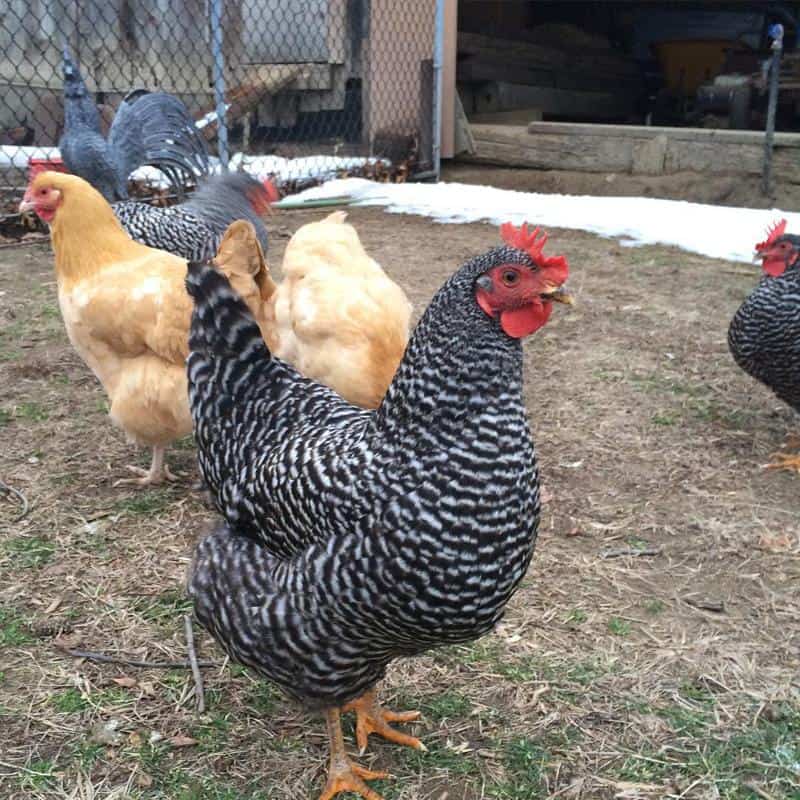
The Holland is possibly the rarest chicken breed that was developed in the USA. This breed got its name due to the Dutch origins of some of the birds used to develop it.
Originally, there was a Barred Holland, whose appearance is similar to that of Barred Rocks and Dominiques, and a White Holland. The White Holland is believed to have already gone extinct.
Hollands were developed in the 1930s to produce white eggs but didn’t gain significant acceptance despite their many wonderful qualities. These birds are excellent foragers, handle cold weather well, lay as many as 240 eggs, and are calm enough to have around children.
This dual-purpose breed’s status is critical according to The Livestock Conservancy which means there are less than 1000 of these birds in the world today.
- Origin: USA
- Primary Purpose: Meat and Eggs
- Personality: Mild-Mannered
- Population Estimate: Less than 1000
- Special Fact: May be the rarest American breed.
Onagadori
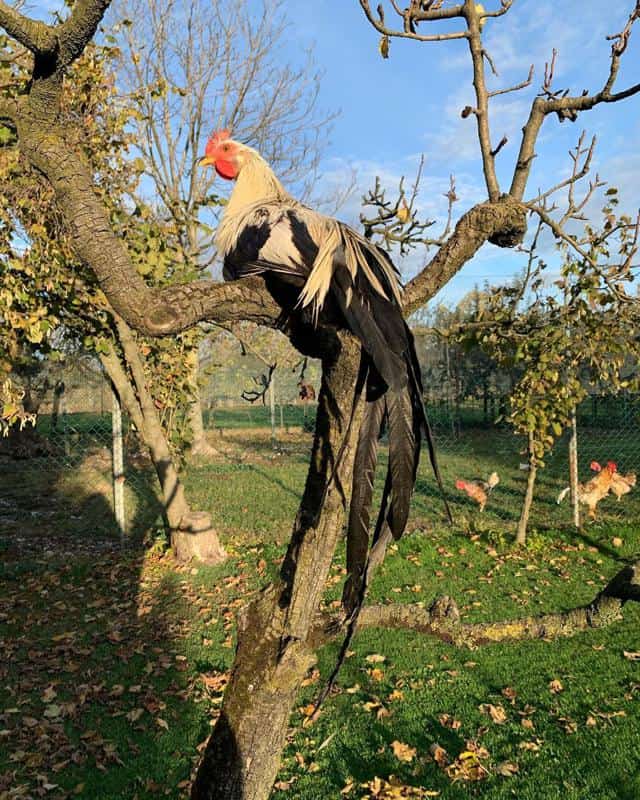
The Onagadori is one of the most unique chicken breeds and it is considered a national treasure in Japan. This rare breed dates back to the 1600s and it has a uniquely long tail similar to the Phoenix Chicken.
The Onagadori has three color variants of which the black-breasted white is believed to be the original.
These chickens’ tails typically grow longer than 4.9 feet and some have been known to grow tails as long as 39 feet.
As of 2007, this chicken breed was said to be endangered by the Food and Agriculture Organization (FAO). There are roughly 250 of these ornamental birds in Japan today.
- Origin: Japan
- Primary Purpose: Ornamental
- Personality: Mild-Mannered
- Population Estimate: Around 250
- Special Fact: They are poor layers, and this contributes to their low numbers.
Crèvecoeur

Once served as a popular dish to the French upper-middle class, the Crèvecoeur is a rare meal today with global numbers estimated at less than 10000. Crèvecoeur chickens are an ancient breed that already existed in the 12th century.
The Crèvecoeur’s numbers suffered largely due to the Second World War. Most of the birds kept in France were gone within two years of German soldiers’ arrival at Normandy.
Thanks to restorative efforts in France, the US, and Australia, these chickens are no longer critically endangered. Crèvecoeurs don’t just have high-quality meat, they also lay between 120 and 150 eggs in a year and don’t stop laying within the first few years.
The Crèvecoeur chicken is crested and is typically black but can also be blue, cuckoo, or white. It has a V-shaped comb similar to the La Fleche’s.
- Origin: Pays d’Auge, France
- Primary Purpose: Meat and Eggs
- Personality: Mild-Mannered; Active
- Population Estimate: Less than 10000
- Special Fact: Have sensitive digestive systems but modern birds are no longer as delicate as they once were.
White-Faced Black Spanish
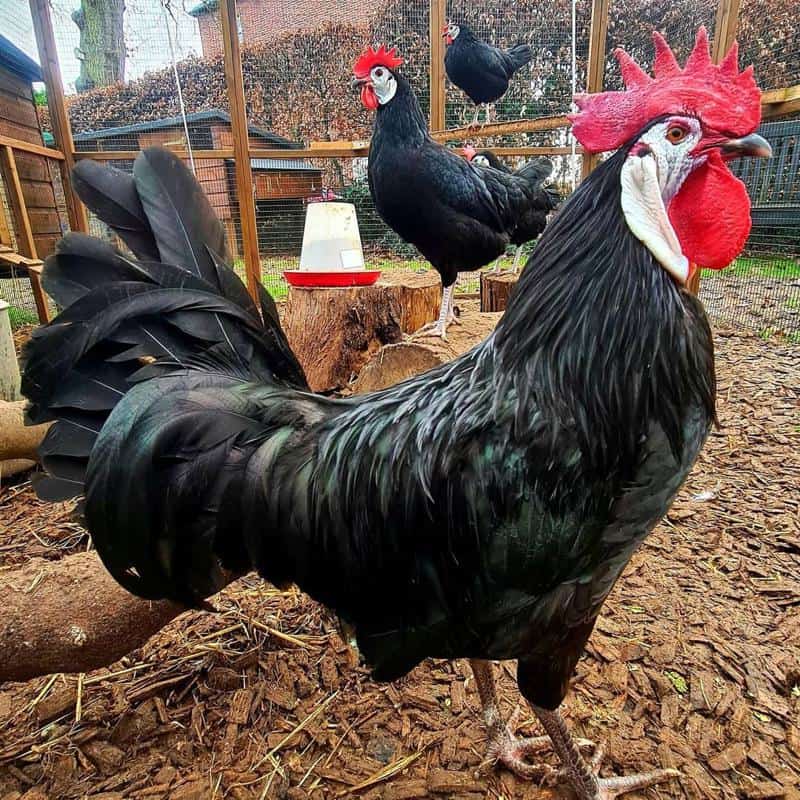
This breed is also known as the Spanish chicken and is known for its larger-than-normal white earlobes and its debonair posture. This breed was once famous and very popular in different parts of the US.
In the past, this breed had a moderate white face. However, breeders wanted to make the chickens’ white faces larger.
As a result of the breeders’ efforts, the hardiness of these chickens suffered. This loss of hardiness plus the delicate chicks resulted in a decline in the breed’s popularity.
White-Face Black Spanish chickens were prized as layers as they could manage 180 eggs in a year. These curious and active birds like to roam and would still make a good backyard flock if you can provide the care they need.
- Origin: Spain
- Primary Purpose: Eggs
- Personality: Active, Noisy, Non-Aggressive
- Population Estimate: Less than 1000
- Special Fact: The breed became less hardy due to breeders’ focus on getting larger white faces.
Also Read: Black Chicken Breeds
Sultan
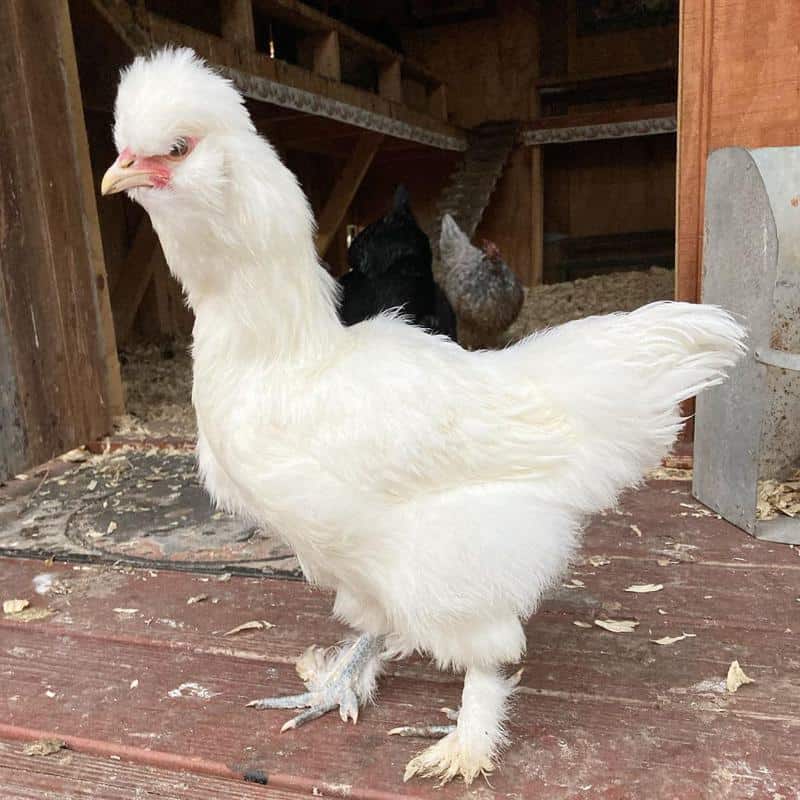
The Sultan Chicken has been rare since the mid-1800s when it first arrived in England. In the 1930s, the breed almost went extinct and today there are still fewer than 5000 of these birds in the world.
White is the only plumage color of the Sultan that is recognized. These birds are easy to distinguish from other breeds thanks to their beards, crests, muffs, V-shaped combs, five toes, and several other features.
Sultan chickens are mostly kept as pets today but were said to have made decent table birds thanks to their delicate white meat. They are active birds but like to be held and the roosters show little aggression.
They prefer warm climates due to their high risk of frostbite.
- Origin: Turkey
- Primary Purpose: Ornamental
- Personality: Active, Friendly
- Population Estimate: Less than 5000
- Special Fact: They lay just over 50 eggs in a year.
Lamona
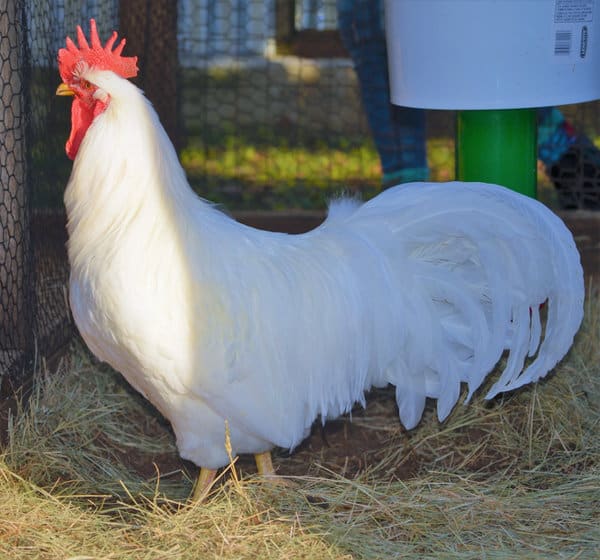
The Lamona is a chicken so rare that it is not publicly known who owns the last remaining flocks of these birds. Between the 1980s and 2005, it was thought that these chickens had gone extinct.
The Lamona was developed in the USA, and it was an excellent dual-purpose breed. It is said that these birds can produce up to 268 eggs in a year, yet the meat of mature hens remains tender, unlike that of other layers.
Lamonas have all-white plumage, red earlobes, and single combs. They are heavier than Light Leghorns.
Despite their excellent qualities, it is not known if any Lamonas existing today descended from the original flock.
- Origin: USA
- Primary Purpose: Eggs and Meat
- Personality: Unknown
- Population Estimate: Unknown
- Special Fact: Their red earlobes are unusual for white egg layers.
Campine
The Campine is a chicken breed from Belgium, and it played a pivotal role in the development of the modern chicken production system.
The Golden Campine helped to create the first auto-sexing hybrid, the camber. Autosexing is the color differentiation that allows male and female chicks to be separated accurately soon after hatching.
Campines can produce up to 200 eggs per day. This quality made them prized layers back in the day, but they didn’t have the desired impact in the USA since they were less hardy back then.
Both the Golden and Silver Campine have barred bodies. The Golden Campine’s head and hackles are gold while the Silver Campine’s are white.
- Origin: Belgium
- Primary Purpose: Eggs
- Personality: Friendly, Not Cuddly
- Population Estimate: Less than 5000
- Special Fact: Was considered to be the same breed as the Braekel until 1884.
Erminette
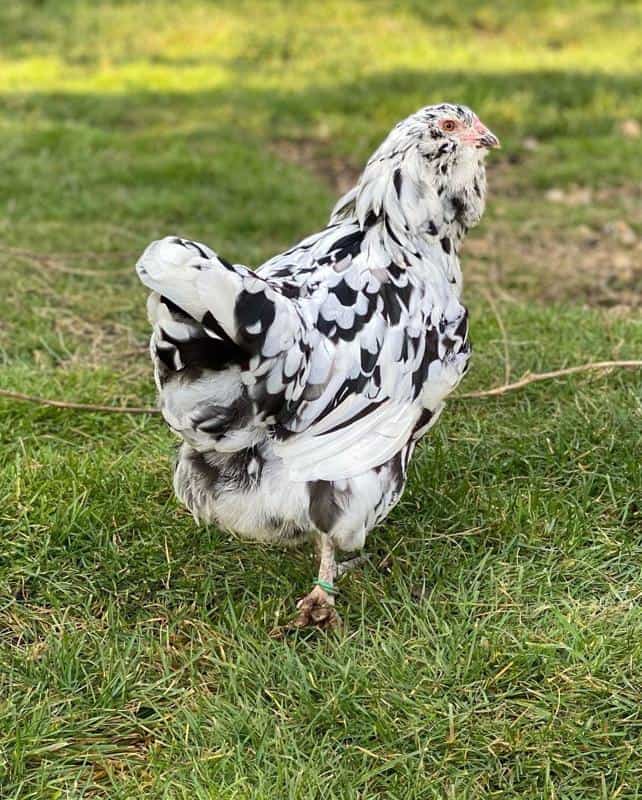
The Erminette might be America’s forgotten breed and it nearly went extinct in the 20th century. This bird is the only breed that still showcases its unique color pattern and it is making a comeback today thanks to the efforts of a small but dedicated group.
Erminettes are mostly white chickens with solid black feathers that appear randomly all over their bodies.
As of 2020, it was recorded that there were just over 200 of these birds, a notable increase in their numbers.
Erminettes are said to be excellent table fowl as well as layers, capable of producing more than 240 eggs in a year.
- Origin: USA
- Primary Purpose: Eggs and Meat
- Personality: Unknown
- Population Estimate: Less than 300
- Special Fact: Erminette is the name of the chicken and the name of the color pattern.
Burmese
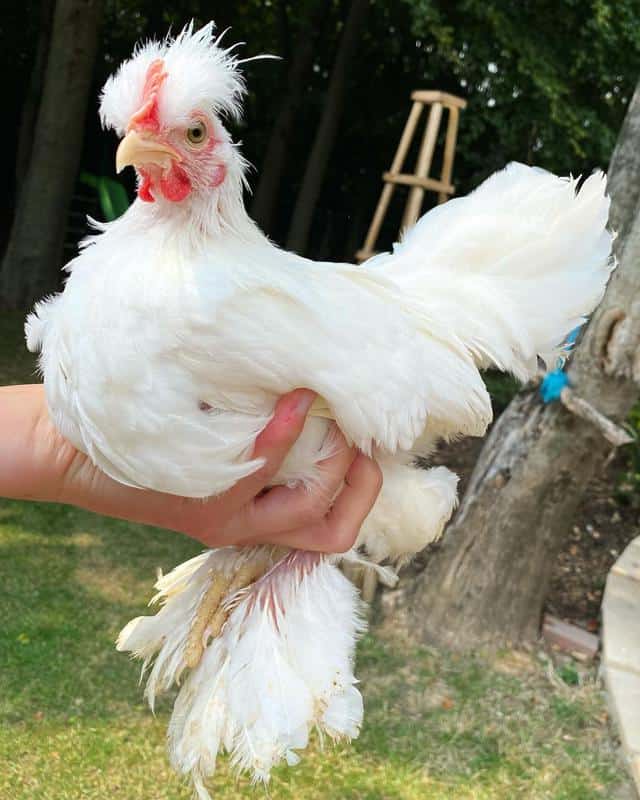
The Burmese chicken has the distinction of having been mentioned by Charles Darwin in one of his books. This breed has also had to be brought back from the brink of extinction by breeding with other breeds.
This chicken originated in Myanmar and was first sent to the UK in the 1880s. They have a small crest and carry the creeper gene which causes them to have distinctly short legs.
Only pure White Burmese chickens are officially recognized in the UK. The breed was thought to have died out, but a small flock was rediscovered in the 1970s.
With the help of White Booted Bantams, the breed was able to be brought back.
The Burmese chicken is an ornamental bantam breed.
- Origin: Myanmar
- Primary Purpose: Ornamental
- Personality: Unknown
- Population Estimate: Unknown
- Special Fact: There is a Dutch recreation of this breed that is black, but it is not yet a perfect match of the original.
Sicilian Buttercup
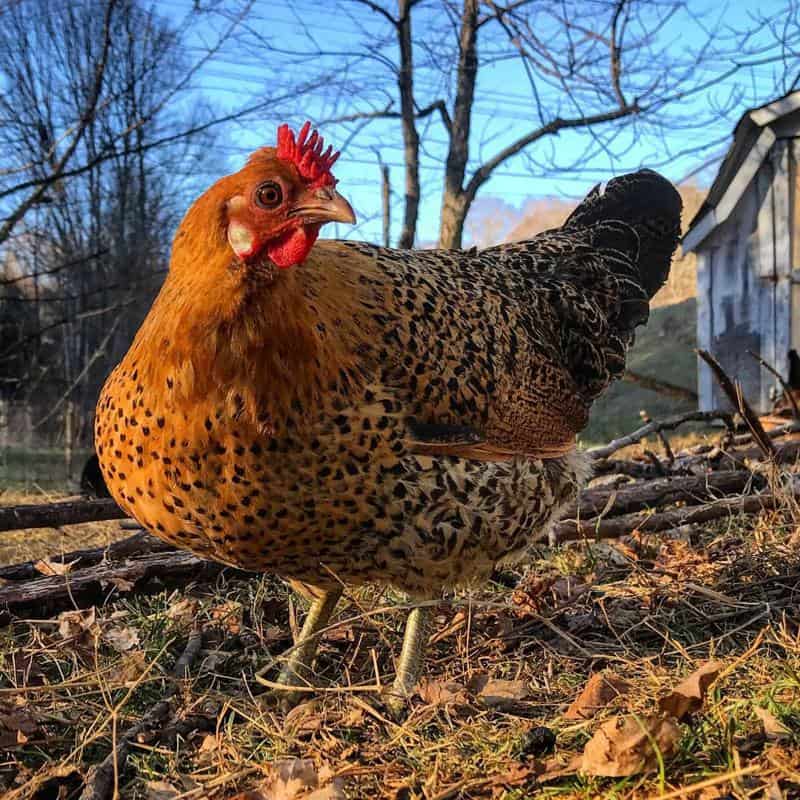
As the name suggests, the Sicilian Buttercup originated from the island of Sicily. These chickens have a unique comb that is said to be two single combs that merge at the front and back forming a crown.
Sicilian Buttercups hens are a golden buff color with black oval spangles while the roosters are a mix of red and orange with black tails.
Sicilian Buttercup hens lay between 140 and 180 eggs in a year. These birds like neither the cold nor being raised in confinement.
Some strains are sweet and friendly while others are not receptive to humans. Chickens similar to the Sicilian Buttercup can be seen in 16th-century paintings in the Vatican Museums.
- Origin: Sicily, Italy
- Primary Purpose: Eggs
- Personality: Calm or Flighty depending on strain
- Population Estimate: Less than 5000
- Special Fact: Derived from the ancient Siciliana breed of chickens.
Derbyshire Redcap
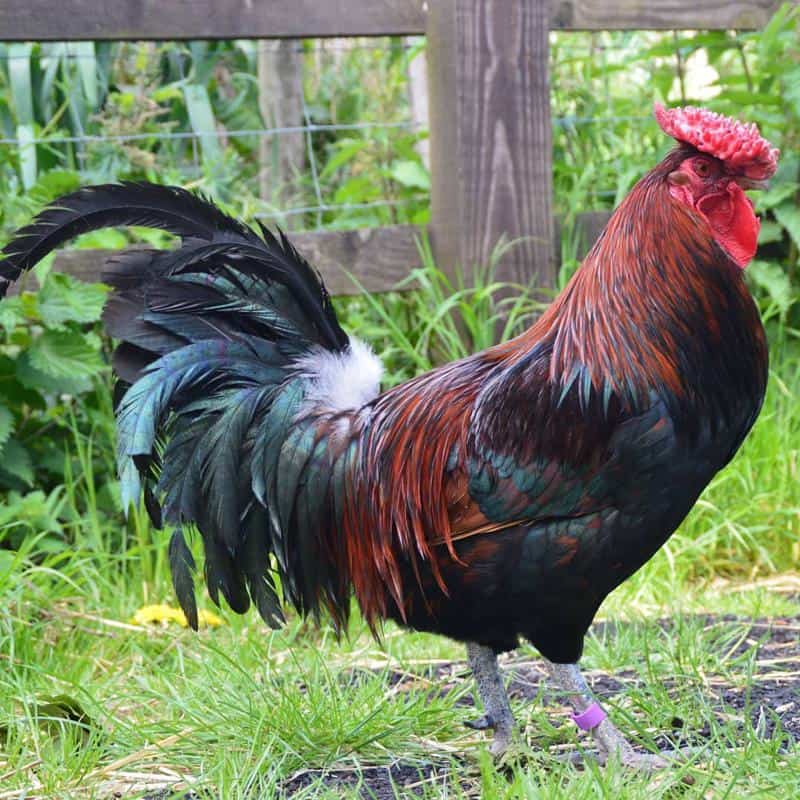
The Derbyshire Redcap, also known as the Redcap, was once thought of as the most profitable breed for farmers.
These chickens are very good layers that can produce as many as 200 eggs in a year and lay for many years. The layers’ meat also remains tender and older layers make good table birds.
Redcaps have a uniquely large rose comb, hence their name, and have plumage that is black or deep red with half-moon spangling.
Despite its utility, this hardy and lively breed was almost extinct by 1900 in England.
- Origin: Derbyshire, England
- Primary Purpose: Eggs and Meat
- Personality: Lively, Shy
- Population Estimate: Less than 1000
- Special Fact: The Red Dorkings are speculated to have been Redcaps.
Malay
The Malay is unique among chickens because it is one of the tallest breeds. They can stand as tall as 36 inches thanks to their long legs and necks.
This chicken breed is old and may even be thousands of years old and was the first large chicken breed from Asia to be taken to the West.
The Malay chicken has many polarizing characteristics.
The crow of the roosters is said to be short and hoarse, a bit like a roar. Their facial expression has been described as snaky, and their personality makes them a menace to other chickens and their own chicks.
Malays don’t make cuddly pets nor are they considered safe to have around children.
- Origin: Asia
- Primary Purpose: Meat and Exhibition
- Personality: Quarrelsome, Aggressive
- Population Estimate: Less than 1000
- Special Fact: Can be protective of humans
Also Read:
Saving the Rare Chicken Breeds
The world of chickens is full of many interesting and exotic breeds. Some of these chickens are so rare that they’ve never been seen by more than a handful of people.
There are many factors that led to chicken breeds becoming rare. Some breeds were pushed aside in favor of more productive breeds, but others are rare because they are harder to breed than others.
Special cases like the White-Faced Black Spanish show how breeding for certain qualities can end up hurting the popularity of a breed and its ability to survive. Luckily, many breeders have learned from the mistakes made by their forerunners.
Recent efforts by breeders across the world have helped to bring back many unique chicken breeds from the brink of extinction. Many of these rare chicken breeds are doing better today than they were in the past and that is a good thing.
